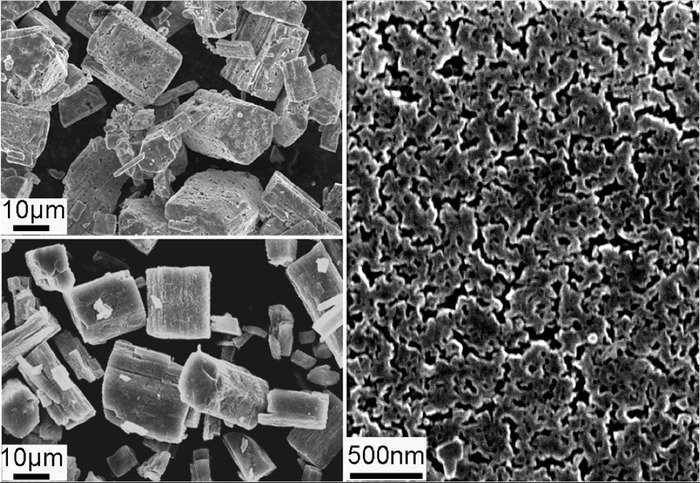Researchers developed a nanoporous solid electrolyte (bottom left and in detail on right) from a lithium compound.. The material conducts ions 1,000 times faster than its natural bulk form and enables more energy-dense lithium ion batteries. Credit: ORNL
OAK RIDGE, Tenn., Jan. 25 (UPI) -- U.S. scientists say they have developed a nano-structured solid electrolyte for more powerful, efficient -- and safer -- lithium ion batteries.
Current lithium-ion batteries rely on a liquid electrolyte, the material that conducts ions between the negatively charged anode and positive cathode of the battery, but liquid electrolytes often entail safety issues because of flammability.
Safety issues involving lithium-ion batteries have led to the recent grounding of Boeing 787 Dreamliner aircraft following battery and electrical system problems.
Researchers at the Oak Ridge National Laboratory say building batteries with a solid electrolyte could overcome some safety concerns.
"To make a safer, lightweight battery, we need the design at the beginning to have safety in mind," ORNL researcher Chengdu Liang said.
The researchers developed a solid lithium electrolyte by used a chemical process called nanostructuring, which alters the structure of the crystals that make up the material.
"Think about it in terms of a big crystal of quartz vs. very fine beach sand," study co-author Adam Rondinone said in an ORNL release Friday. "You can have the same total volume of material, but it's broken up into very small particles that are packed together.
"And now this solid material conducts lithium ions at a much greater rate than the original large crystal."
Researchers say their findings could lead to safer batteries and allow for more energy in a smaller battery volume.















